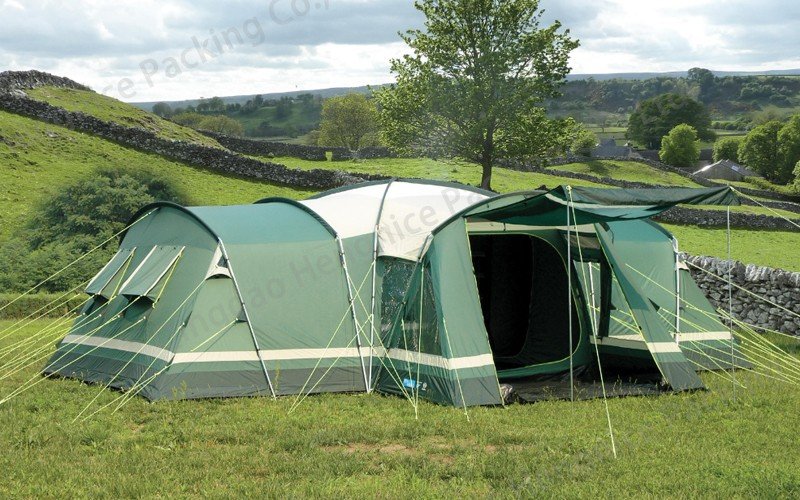
Tent tarps, also known as tent groundsheets or tent footprints, are typically made from durable and waterproof materials to provide protection and insulation for the tent floor. The specific material used can vary depending on the manufacturer and the intended purpose of the tarp. Here are some commonly used materials for tent tarps:
1. Polyethylene (PE): PE is a common material used in tent tarps. It is a lightweight, waterproof, and relatively inexpensive material. PE tarps are available in different thicknesses, ranging from lightweight to heavy-duty options.
2. Polyvinyl chloride (PVC): PVC is a popular material for tent tarps due to its excellent waterproofing properties and durability. PVC tarps are often used for heavy-duty and long-term camping or industrial applications.

3. Oxford Fabric: Oxford fabric is a type of woven fabric that is commonly used in tent tarps. It is made from synthetic fibers, typically polyester, and is known for its strength, durability, and water resistance. Oxford fabric tarps are often coated with a waterproofing agent to enhance their performance.
4. Ripstop Nylon: Ripstop nylon is another lightweight and durable material used in tent tarps. It is a woven fabric that features reinforced threads in a grid pattern, providing added strength and preventing tears from spreading. Ripstop nylon tarps are often coated with a waterproof or water-resistant coating.
5. Canvas: Although less common in modern tent tarps, canvas was traditionally used in tent construction. Canvas tarps offer excellent durability and breathability. They are typically treated with waterproofing agents to enhance their water resistance.
It's important to note that the specific material used for a tent tarp may vary depending on the intended use, desired features (such as breathability or UV resistance), and budget considerations. When purchasing a tent tarp, it's advisable to check the manufacturer's specifications or product descriptions to determine the exact material used.